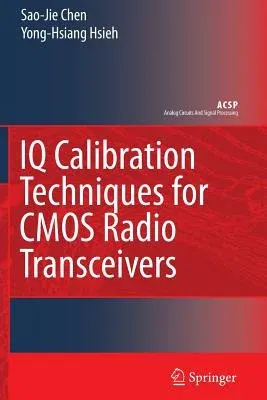Sao-Jie Chen
(Author)IQ Calibration Techniques for CMOS Radio TransceiversPaperback, 30 November 2010

Qty
1
Turbo
Ships in 2 - 3 days
In Stock
Free Delivery
Cash on Delivery
15 Days
Free Returns
Secure Checkout

Part of Series
Analog Circuits and Signal Processing
Print Length
89 pages
Language
English
Publisher
Springer
Date Published
30 Nov 2010
ISBN-10
9048172799
ISBN-13
9789048172795
Description
Product Details
Authors:
Book Format:
Paperback
Country of Origin:
NL
Date Published:
30 November 2010
Dimensions:
22.86 x
15.49 x
0.76 cm
ISBN-10:
9048172799
ISBN-13:
9789048172795
Language:
English
Location:
Dordrecht
Pages:
89
Publisher:
Weight:
181.44 gm